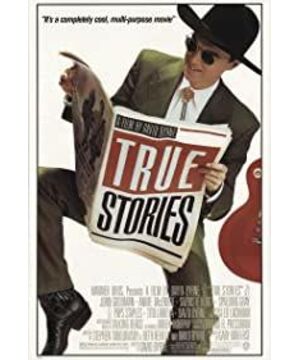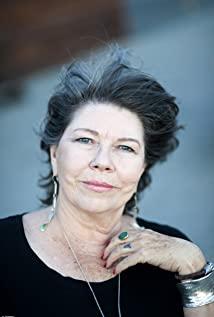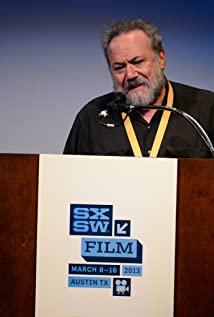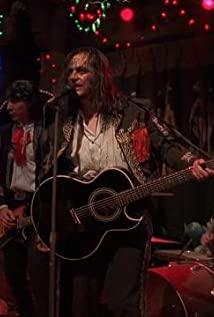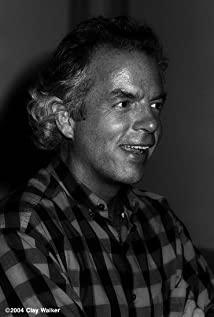Author: Margaret Barton-Fumo (Film Comment)
Translator: csh
The translation was first published in "Iris"
"I think it looks real, and it also has a new romantic style," David Byrne told a reporter from Film Review when "Believe It or Not" was released in 1986. In this film, the director depicts the beautiful scenery of Virgil, a small town in Texas, and all of this has now been included in the CC Standard Collection, including a complete soundtrack from Nonesuch. This time, "Film Review" reporter Margaret Barton-Fummer met with Byrne (he just spent most of this year touring to promote his new album "Utopia of America") to discuss " The production of Believe It or Not.
So before "Believe It or Not", in 1981, you made a music video for "Once in a Lifetime." Is that your first time as a director?
I work with Tony Basil. She is the choreographer of that song, but I'm not sure how it is written on the credits. We can say that we work together seamlessly, so I might be a choreographer on the table, and she got the title of director, or the opposite. But it was indeed during that time, when I was working on that video — and some earlier videos — I learned the most basic editing — at least the editing of music videos. Although this is still different from movie editing, there are some similarities between them. In other words, I was able to participate in TV or film work step by step. My first video work was based on video tape, which is a bit unusual. But I finally "graduated" with 16mm film, and then 35mm film.
Have any directors influenced your directing style?
Oh, of course. I have been influenced by many people in many ways. The way Hitchcock tells stories has a great influence on me, and the imagination of Fellini and many European directors is also amazing. There is also the kind of narrative of Robert Altman. In his films, we can often see something different from the traditional narrative concept. I'm also a big fan of experimental films: Bruce Connor's films full of psychedelic effects, they can make you rethink the function of the film, as well as the other possibilities of this medium. All these things are great.
It is said that Errol Morris’s "Vernon, Florida" was part of the inspiration for "Believe It or Not." Is this true?
Yes, I remember I watched this video. I might also show it to the screenwriters. I remember that I also screened Chris Mark’s film "The Sun and the Moon" for the screenwriters I worked with—Stephen Tobrowski and Beth Henry—and this may also have a certain impact on our film. I mean, I love that movie, but what inspires them is the way Chris Mark presents his images. He weaves the story into it, using the structure of the exchange of letters, and you can hear someone reading these letters in the video. This made me think: there are many ways to make the story go, which helps us start our own work, but we don't have to follow his storytelling style every moment.
I really like the scene design of that big show, the paragraph of that centenary.
Oh, that's Barbara Ling's credit, it's all her idea. That's really great.
Is she a set decorator?
She is the art director, and she worked with Diane Keaton in a film called Heaven (1987). I really liked the effect that the film showed, so I met her. For many books on painting and architecture, as well as many other things, we all have the same preferences. So I thought, well, we are equally sensitive to certain things.
CC also released a feature film by Tibor Kalman this time, introducing his contribution to the film.
CC did a lot of good things. They made a short film about Tieb Kalman, a graphic designer who worked with me in "Believe It or Not". He joined the crew in the late filming period, and creatively presented the "slideshow" scenes at the beginning of the film, including shots showing the title of the film, etc., anyway.
There is also the amazing photography of Edward Lachman. How did you run into him?
I have seen some movies in which he participated in photography, like some Wim Wenders movies.
I remember he was still filming "Mystery Date" at the time. He can be regarded as a great photographer.
He really has a lot of cards. But I think it is also those subtle artistic preferences that connect us together. Just like Barbara Ling, when we met, we all brought a lot of photography books to exchange with each other. At that time, the books we read were mainly collections of the works of those who are called "new color photography" representatives: Bill Eggleston, Joel Steinfeld, Joel Meyerowitz-a large He was a photographer who received much attention and love at the time. We admired their composition, colors, and other things, and then said, "This would be a good way to portray Texas."
The use of colors in this film is indeed vibrant and beautiful. It is said that you were still in the process of conceiving "Believe It or Not" and you also drew inspiration from the tabloid story.
Yes. The story of the fat boy came later. First we have a wall with pictures and storyboards, and then there are more things-maybe some stories from World News Weekly, about some Texans and their own way of life. Maybe, I think when I read one of the articles, I saw a character looking for his wife. He may be able to appear here or there, and then he has a song... Then, some other stories have also found their own roles.
I find it very interesting that in your recent series of lectures "Why to Be Happy", you went back to the newspaper and discussed some real stories. That story about a Texas politician--
That is a good story!
I feel that he may exist in that small town called Virgil.
Indeed, he felt almost the same as that small town. I am still doing something like that. I found a new piece of news, and I was still thinking about it this morning. That's the news that many places have run out of fossil fuels.
We return to "Believe It or Not". I took a note: "John Goodman".
John Goodman, John Goodman. John Goodman is incredible.
Did you choose him?
I think it should be Vicky Thomas, she is our casting director. She let him get our attention. He acted very well. He seemed to have played a role on Broadway at the time, in a musical called "The River". After that, he soon joined the work of our crew.
How is your own acting experience? I really like the way the characters read their lines in your play.
When this guy talked, he had a peculiar oral addiction. I wanted Goodman to play him. As a result, I was persuaded by everyone to play this role myself. I have no ambition to be an actor, although this experience is really interesting. For me, compared with being an actor, the part of being a director is the really happy part.
But you never made a feature film afterwards?
I later filmed a documentary in Brazil ("House of Life")-it is indeed a completely different experience compared to filming the things in the script. But again, I still enjoy the process very much.
In the version released by CC, they re-released the songs of the film, but this time it was the version sung by the actors. Maybe this is the first time you have not been fully responsible for the music of "Believe It or Not".
This is indeed a bit unfortunate, but... this is due to commercial pressure. This time there is a CD that contains all the music in this film, in the order of the film. So although occasionally there will be a song played by a talking head band, they are all sung by actors.
I also like the children's singing.
Oh, thank you (laughs).
View more about True Stories reviews


